Sony A80L Reviewed at $1,699.00 (55")
Product Name: Sony A80L
Product Description: 2023 4K OLED TV
-
Design - 9/10
9/10
-
Video Quality - 8.9/10
8.9/10
-
Ports & Connectivity - 9/10
9/10
-
OS, Apps and Features - 9.3/10
9.3/10
-
Price / Quality - 9/10
9/10
Summary
Reviewed at $1,699.00 (55″)
Pros
- Amazing black levels
- Excellent colors & contrast
- Many online and smart features
- Affordable price
Cons
- Lower peak brightness than last year
- Only 2 HDMI 2.1 ports
- No FreeSync support
- Average audio
Cheapest Places to Buy :
*We are a reader-supported website. When you buy through links on our site, we may earn a small affiliate commission at no extra cost to you. Home Media Entertainment does not accept money for reviews.*
Sony was a bit late this year to release their new TVs but finally we start to see some of their new models appear on the markets across the globe. As such in our Sony A80L review today we will have the chance to test Sony’s only OLED this year while we have more of their lineup down our pipeline for reviewing pretty soon.
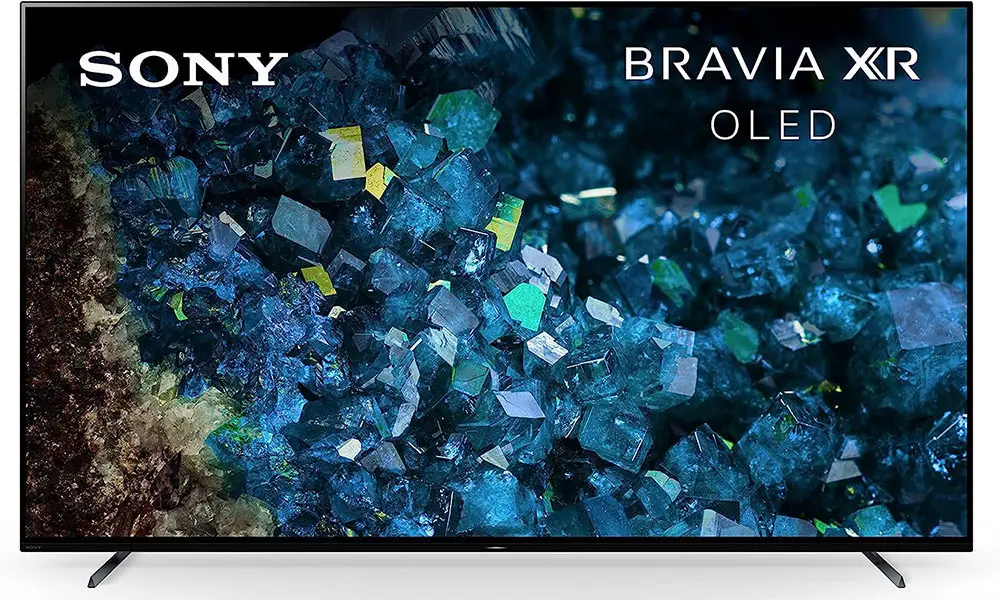
It is interesting that Sony has really scaled down their OLED lineup in 2023 with a single model available, the A80L. The A95L sitting above this is a QD-OLED while all the rest go into the LED LCD territory. In 2022 they had three OLED models along with the A95K, which was their first QD-OLED offering. Why this change in their release strategy is not known.
But let’s focus on the A80L for now. The TV uses a 100/120Hz WOLED panel, comes with Cognitive Processor XR and Sony’s most advanced Acoustic Surface Audio+ system. There is Dolby Atmos, DTS and Dolby Vision support. We also find two HDMI 2.1 ports with VRR out of the box, and is packed with the latest Google TV platform. For extras we get Chromecast, Airplay 2 and Homekit, Bravia Core, voice control, Netflix calibrated mode, IMAX Enhanced, Calman Ready and Bravia Cam support.
Looking at the specs sheet we do not see any major differences between the A80L and the 2022 A80K. Both TVs look extremely similar. So only our testing will reveal if these two models are indeed the same or if Sony did change anything in their latest offering. Without further delay, let’s start our analysis.
Design
First let’s begin by talking about the design and upon unboxing the first thing that we immediately noticed was how similar the A80L looks to the A80K. In fact the two TVs seem to be exactly the same which is another clue on how little Sony changed in this one year.
One thing that we need to mention is that while most OLED TVs from all manufacturers use an extremely thin panel along with the plastic box, that houses all electronics at the back of it, the A80L actually has a slightly curvy panel at the back that we usually see in LED LCD TVs. It is still very thin, much more than any non OLED TV we have tested. But it comes with the same curved back as the A80K.
Measurements
The TV retains the same premium feel most Sony OLEDs have even if it is still mostly made out of plastic.
Thickness was measured at about 2.1″ (5.3 cm) which is exactly the same as the A80K.

Back Side
The back of the TV is using the same grid style design that we saw in the A80K. The ports are again all on the right side looking sideways for easy access if you want to place it on a wall.
The power connector is on the left side while the VESA mounting holes are the only other element visible. The XR logo that was visible in the middle of some 2021 TVs and was gone last year is still missing.
As far as cable management everything remains the same. No grooves to drive the cables through and no special clips that could attach to the legs and keep all cables together.
Stand
Sony kept the same design not only for the body of the TV but for the stand also.
The one that comes with the A80L is the usual bench type one which usually needs a large surface to place the TV on. Thankfully Sony understood the problem and designed it in such a way to give you more options.
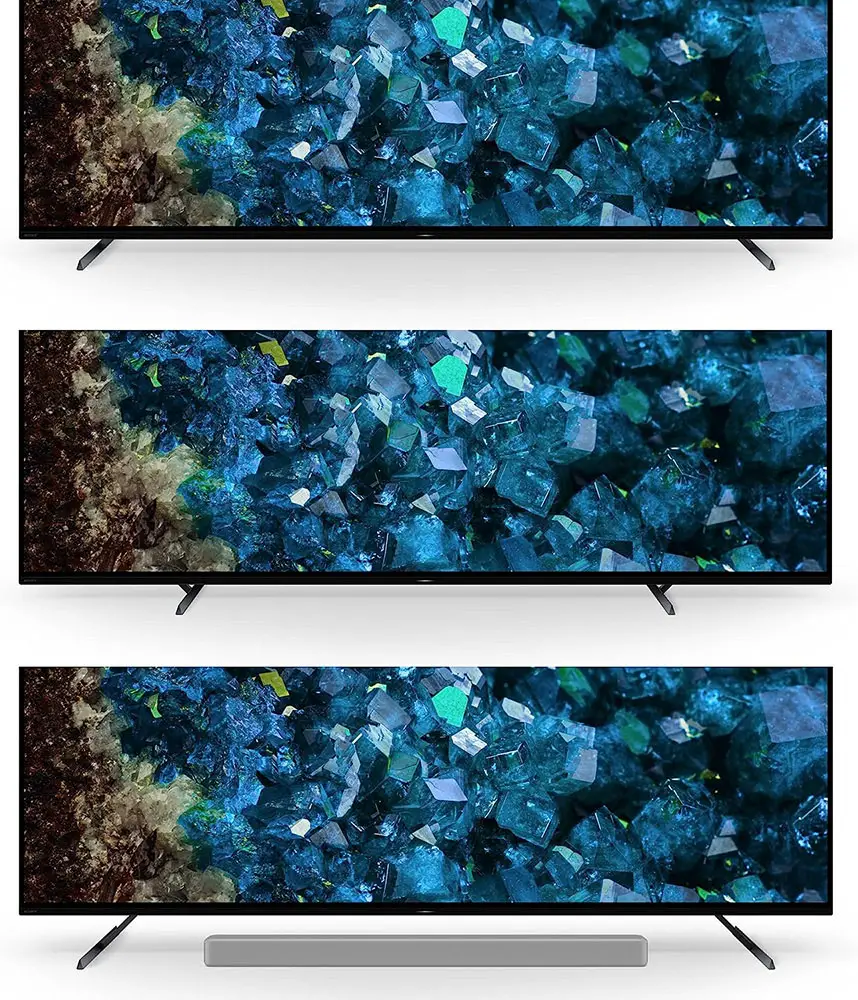
As such there are three different placements for the stand. The wide (default) position, the narrow position and the soundbar position. The narrow position is good if you have a smaller furniture to place the TV on. The soundbar position on the other hand leaves enough space under the panel to place a soundbar.
The wide and narrow positions leave a space of 1.8″ between the surface and the panel. The soundbar position on the other hand leaves a space of 3.4″, which is more than enough for any soundbar available today.
Remote
As for the remote, the one we find in the A80L is probably the only aspect of the TV that comes with minor changes compared to last year. But the differences are really small and the remote feels and looks very much the same as the one Sony had in 2022.
Sony really found a nice balance for their buttons layout. It is not as cluttered with buttons as LG’s remotes are and is a bit more functional than Samsung’s One Remote. The number of buttons is just the right one and you will never feel troubled pressing the correct one.

The remote obviously comes with a built-in microphone for issuing your commands to the TV and also comes with six dedicated buttons instead of four available last year.
In the new one you will find buttons for the usual Netflix, Amazon Prime, DIsney Plus and Youtube. Sony also added their own Bravia Core Service and Chruncyroll which is a first we see this. It appears that Crunchyroll is an online service for anime and manga so it makes sense to see this from Sony.
Video Quality
Processor technology used
In terms of image processing the A80L uses Sony’s best Cognitive Processor XR which is the same chip used across most premium and top tier TVs from Sony.
The Cognitive Processor XR divides the screen into hundreds of zones and recognizes individual objects in these zones better than ever before. What’s more, it can cross-analyze around a few hundred thousand different elements that make up a picture in a second like focal points, contrast, colors, motion and clarity and determine ways in order to improve the end result even more.
Just from the naming you may think that the A80L is using the exact same chip as the 2022 A80K has. In reality Sony made certain improvements in their processor this year, even though it uses the exact same name.
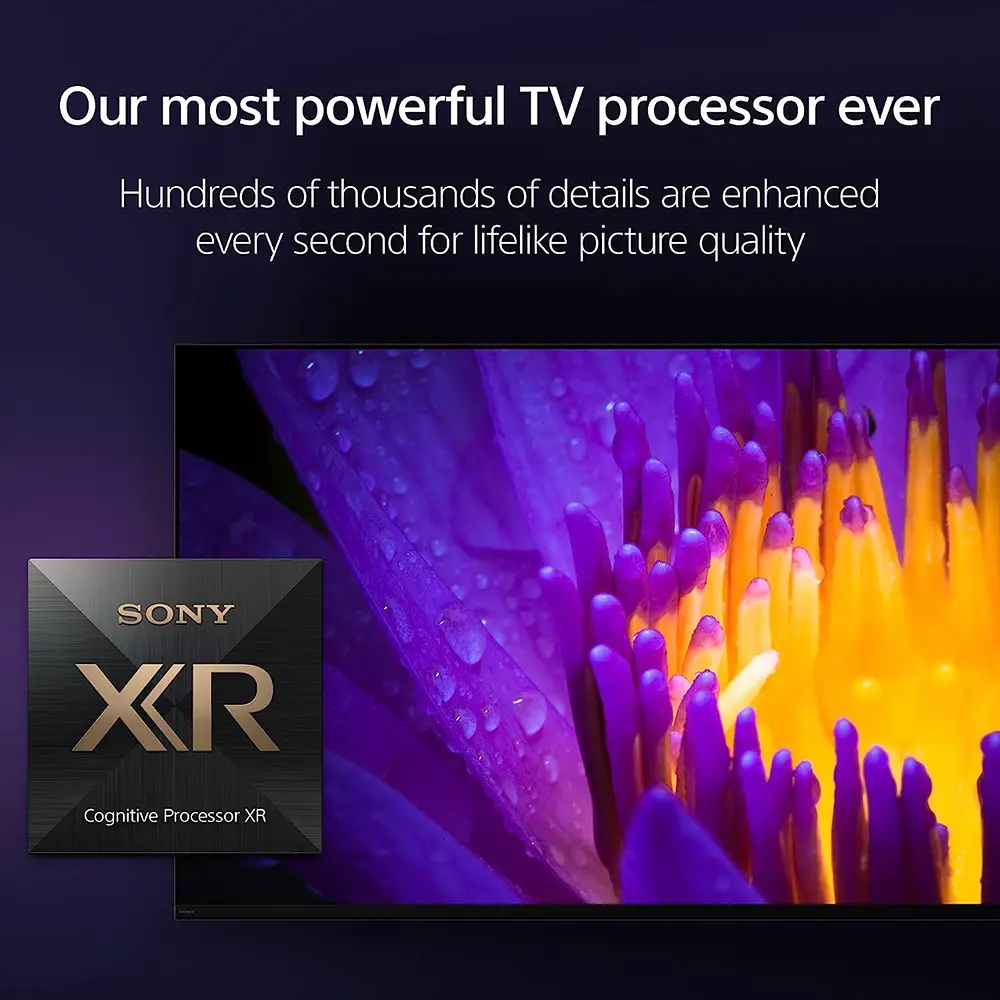
The new addition is called “XR Clear Image”. This new feature gets the input signal and cleans it up with its Signal Characteristics Analysis. This is checking resolution, encoding parameters and bitrate among others in order to apply its Adaptive Noise Resolution and Adaptive Super Resolution.
To make it simple this technology works with low quality streaming and broadcasting content in order to clean the image as much as possible. It can work in parallel with the TV’s upscaling features in order to give you an image that is up to 4K resolution standards.
Resolution and Up-scaling
As always first comes our upscaling testing. We run a few videos in different resolutions ranging from ultra low quality ones, some 480p DVDs, some in 720p and obviously 1080p resolutions. We tried broadcasting signals, streaming content and discs to have a better, all around idea of the TV’s capabilities.
The A80L did really well here. Low resolution content upscaled nicely without losing any details. Low quality streaming content was equally good with very little macro-blocking, which appeared only in very extreme situations.
Overall in these tests the A80L seemed to perform slightly better than the A80K. The “XR Clear Image” feature seem to process the image differently than before. So if you will like what the TV does or not is up to you. And it is very important that you can disable it if you don’t like it.

Audio Processing
We will talk more about the A80L’s audio capabilities in our dedicated audio section but the TV seems to use most of the same audio processing technologies we have seen from Sony before.
As such we find the XR Sound suite which includes Sony’s best Acoustic Surface Audio+ system. Along with it we get XR Surround for virtually created audio and Voice Zoom 2 which is a dialog enhancement feature.
Lighting technology used
The A80L seems to go for a WOLED panel without the addition of a heatsink like we saw in some more advanced OLED releases. In essence the A80L is exactly the same as the A80K so we don’t expect it to have any differences compared to its predecessor.
OLED Explained
The benefits of OLED technology are well known and it results in higher light control and precision. It also has the ability to turn off completely its pixels meaning that you can get totally black levels which is as good as it gets in any TV. And this really elevates the image quality tenfold compared to what we see in most LED LCD panels.
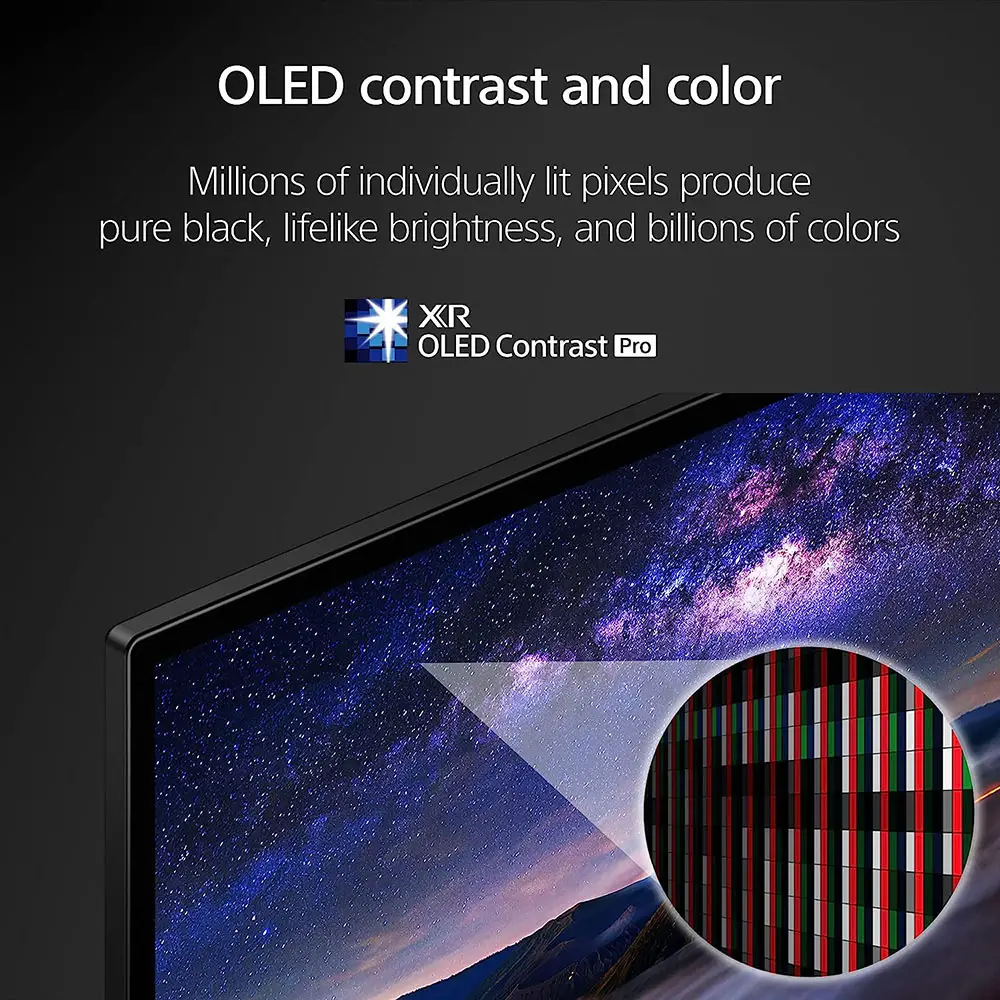
Because there is no backlight the A80L has no problems like blooming that creates bright halos around bright objects when seen in dark backgrounds. Also its image quality is not dependent on how many zones the backlight has as all FALD and mini LED LCD TVs do. So in this regard all OLED panels behave the same.
But as with everything, OLED has a few shortcomings. The first one is that all OLED TVs, due to the technology involved, cannot be as bright as LCD TVs can and this is the reason why QD-OLED and MLA OLED were invented. In the early years there were small advancements in this but the last few yearly OLED releases seem to have reached their peak potential.
And the second shortcoming is that OLED technology is more prone to permanent burn-in. We have seen manufacturers adding special features to combat this. But nevertheless OLED has slightly increased risk of burn-in due to the use of organic materials and should be handled with care.
But the reality is that the last couple of years OLED TVs have become very burn-in proof with all the safeties that manufacturers have added into them.
Number of Dimming Zones
As the TV can turn on and off each individual pixel you can claim that an OLED TV comes with million of dimming zones. Around 8.3 million to be more precise. This is why OLED TVs are so good with blacks that have no blooming visible.

Blooming & Zones Transitioning
In our blooming test patterns the A80L did perfect as you should expect from an OLED TV. Showing a bright object in a completely dark background without any blooming on sight is a real treat for the eyes.
And this shows why OLED TVs remain one of the best, even after so many years in the market. If blooming is your number one problem OLED is your only option. And the A80L is perfect in this regard.
Brightness / Contrast
Next we will be looking at the brightness of the TV. In terms of settings we used the same ones as we do in most Sony models. For picture mode we selected Custom with maximum brightness and Peak Luminance.
SDR and HDR Measurements
First test is the SDR brightness over a 10% window and the number we got was 395 nits which is good enough. It is not very high to combat glare in an extremely bright room, but you should not have much problems most of the time.

We then switched to HDR content and in our HDR brightness over a 10% window test we measured 664 nits. This is good but not great. As always, the saving grace of these OLEDs is their true deep blacks. This makes the lower brightness not such a huge problem overall.
Automatic Brightness Limiter (ABL)
As with all OLED TVs, the A80L comes with an Automatic Brightness Limiter (ABL). This lowers the overall brightness of the screen when large parts of it become very bright for a long period of time. This may not be very obvious when watching a movie for example. But is more obvious with bright static images, or if you use the TV as a computer monitor.
The ABL on the A80L was a bit more aggressive than what we would like. The image would dim significantly compared to it before the ABL kicks in. But as we mentioned above this will happen only if you leave a bright static image for some time. With real world content you are not going to pay much attention to it most of the time.
Last Year Comparison
Overall the A80L seems to be slightly dimmer than the 2022 A80K. The difference is not big but it is there. And this is interesting as both TVs are in theory the same. So the A80K wins in this one, even by a narrow margin.

EOTF Tracking
Brightness levels were extremely accurate to the EOTF reference values up to its relatively sharp roll-off point which means that some details may get lost. Just keep in mind that, as with all Sony TVs, in order for the A80L to follow the curve accurately you have to use its Gradation Preferred tone mapping as the other options are far less accurate.
Contrast Performance
As for contrast using an OLED panel means that the A80L can switch off it’s pixels entirely. This means it gains almost infinite contrast ratio resulting in true deep blacks compared to greyish blacks we see in many LCD models.
Viewing angles
Another advantage of OLED technology is the extremely good viewing angles this can achieve. This is another area where LED LCD TVs fail to achieve the same results. These have to rely on extra layers in order to somewhat improve this. But can never reach the numbers we see with OLED panels.
The Sony A80L is capable of retaining its brightness, color accuracy and black levels at very respectable levels up to 45 degrees of angle with a maximum of 50 degrees before the image starts to degrade a lot. But you most probably are not going to look at the TV at such extreme angles anyway.
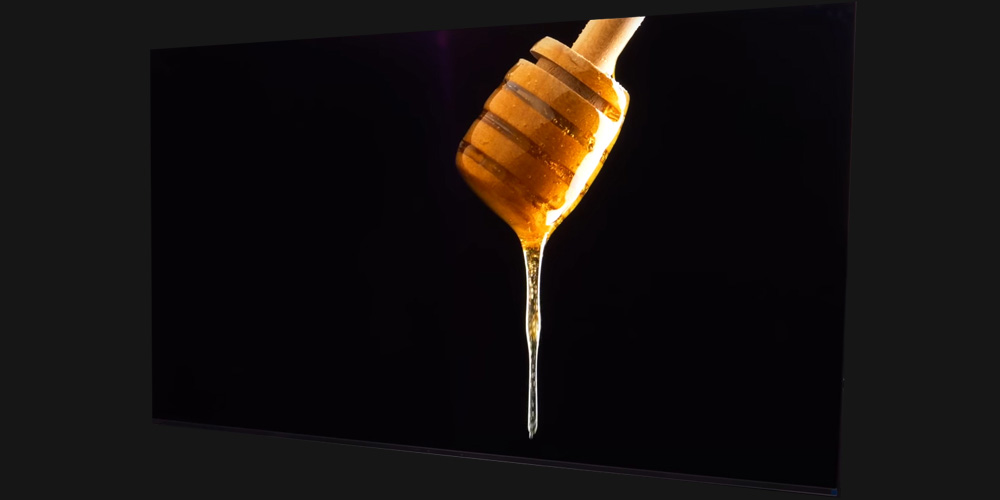
With OLED’s amazing viewing angles it makes the A80L an excellent choice not only for home theater rooms but also for any family setups with all family members sitting in different positions in the living room.
HDR support
As far as HDR protocols Sony likes to include the same across the entire lineup, either it is top tier or lower end TV. So here things are pretty much the same as the rest of the 2023 releases.
In total the A80L features the standard trio of HDR protocols. These are the basic HDR10 which is required for 4K UHD playback, HLG that is used in broadcasting and lastly the more advanced Dolby Vision that uses dynamic metadata and offers the best quality from the three available.
If you don’t care about HDR10+ then you shouldn’t really worry about it. Dolby Vision has far more support although HDR10+ seems to be getting some traction both from online streaming services like Amazon Prime and in the UHD format.

If you really want to have both HDR10+ and Dolby Vision then you will have to look at some other brand like Hisense, TCL or depending where you live at Panasonic or even Philips. Unfortunately none of the big three (LG, Samsung and Sony) support all three of them.
We don’t see this changing any time soon. So if you definitely want them all there are alternative brands to look for. But Dolby Vision has most support right now. So Sony TVs are good in that front.
Color coverage
The A80L, similar to most premium Sony TVs, is equipped with certain tech in order to allow it to display deeper and more lifelike colors. As such Sony has used an XR Triluminos Pro display in combination with their XR Picture suite.
From our measurements the TV can reach about 99% coverage of the DCI-P3 color space which is almost perfect. On the wider REC.2020 color space we got a coverage of 75% which again is great.
Not much difference compared to the A80K. Both TVs have almost the same color coverage.

DeltaE Errors
Before calibration the TV had very good color accuracy. Most colors managed to stay under the DeltaE limit of three. White balance was off and color temperature was higher than it should. But gamma on the other hand was almost perfect.
After calibration we were able to correct most of the above errors. Color temperature was spot on and white balance was almost perfect. Also all colors were further improved and none of them was even close to the DeltaE limit of three.
Although after calibration the TV performed far better we can say that even its out-of-the-box settings were good enough. This makes the A80L ideal for casual users and if you don’t want to mess with complex calibrations.
Color Gradients
Color gradients were extremely good. We only noticed some minor banding in the darker grey shades. But even this was very subtle and not bothering at all.
There is also a Smooth Gradation feature in case banding is bothering you. But you are going to lose some fine detail if enabled as is always the case with this feature.

Panel Uniformity
Grey and black panel uniformity were almost perfect. We did notice some very subtle vertical lines but these were extremely subtle and you are not going to notice them during normal use.
This is not out of the ordinary as all WOLED TVs show these. But from normal viewing distance you are not going to see them.
Motion performance
Next we have our motion performance tests and from all our tests it seems that the A80L perform almost the same as the A80K. The new release uses a 100/120Hz panel along with Sony’s XR OLED Motion. This is the company’s motion interpolation feature included in the XR Picture feature set of their Cognitive Processor XR.
Being an OLED, the A80L doesn’t need a backlight to light its pixels. While in theory this makes the A80L flicker free in reality this is not the case but the flicker is so small that is not visible to the naked eye.
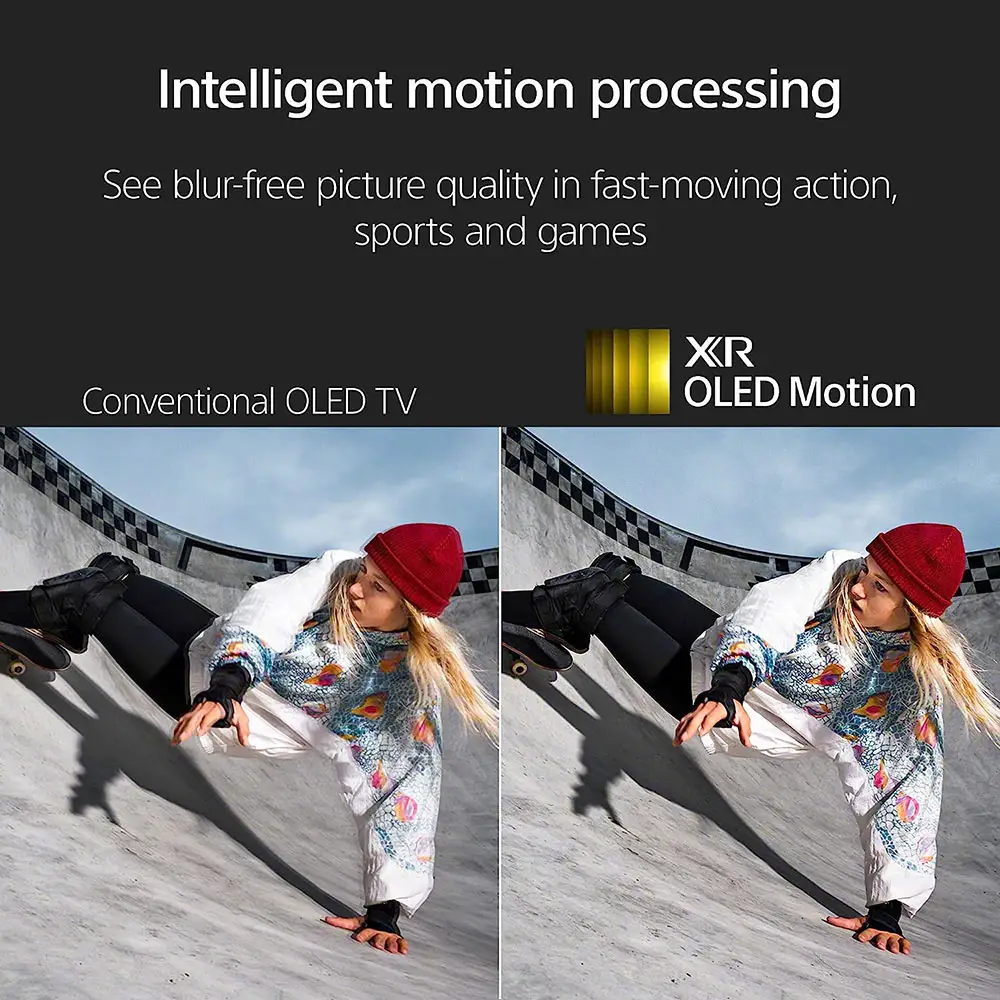
The A80L was really good here as we didn’t see much motion blur. This is obviously a result of the TV’s extremely low response times. But on the other hand this results in a lot of stutter with low framerate content that can be reduced only by enabling motion interpolation. The TV can also remove judder either from 24p or 60p content, which is great for any kind of content.
Motion Interpolation
As we already mentioned, the TV comes with the usual motion interpolation feature. This can smooth motion and remove blur and judder from fast camera movements. Motion interpolation in the A80L was really good with some very solid results if used the right way.
Obviously in very demanding scenes we did see some artifacts. But this was to be expected. And these were mostly due to the very fast camera movements, which is a problem with almost all TVs.
Obviously using very aggressive settings will make the “Soap Opera Effect” to appear so you have to adjust the settings accordingly. Motion Interpolation can be enabled by turning CineMotion to High and MotionFlow to Custom. From there you can adjust the Smoothness slider accordingly.
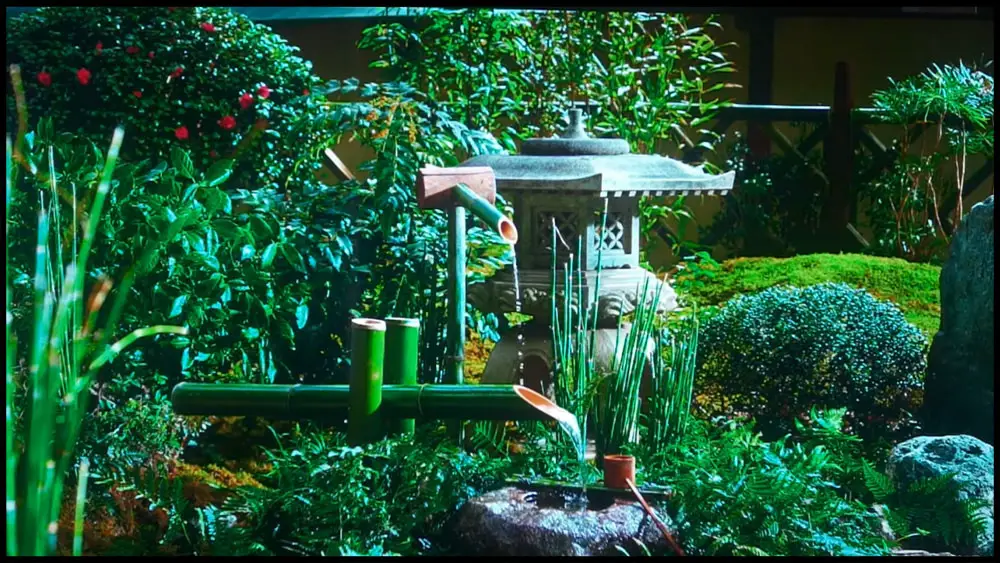
Black Frame Insertion (BFI)
Black Frame Insertion (BFI) is also available and can be enabled with the Clearness setting in the MotionFlow menu. With BFI the A80L was able to smooth motion considerably but not without some undesirable side effects.
The most obvious one is that brightness takes a visible hit. Which is detrimental with an OLED that cannot achieve extremely high brightness output. Also the BFI feature can work only with 60Hz. It doesn’t work with 120Hz and cannot work with VRR either.
Overall Motion Impressions
Overall we cannot say that the A80L was much different than the A80K. Small differences here and there are normal even between the same TVs. So we can say that both TVs are equal in this front.
Input lag Measurements
Next we will test the TV’s input lag performance.
According to our measurements the A80L measured an average of 17.0ms input lag in both 1080p and 4K resolutions at 60Hz. Very good numbers here. At 120Hz we measured 9.0ms in both 1080p and 4K resolutions which again is great.
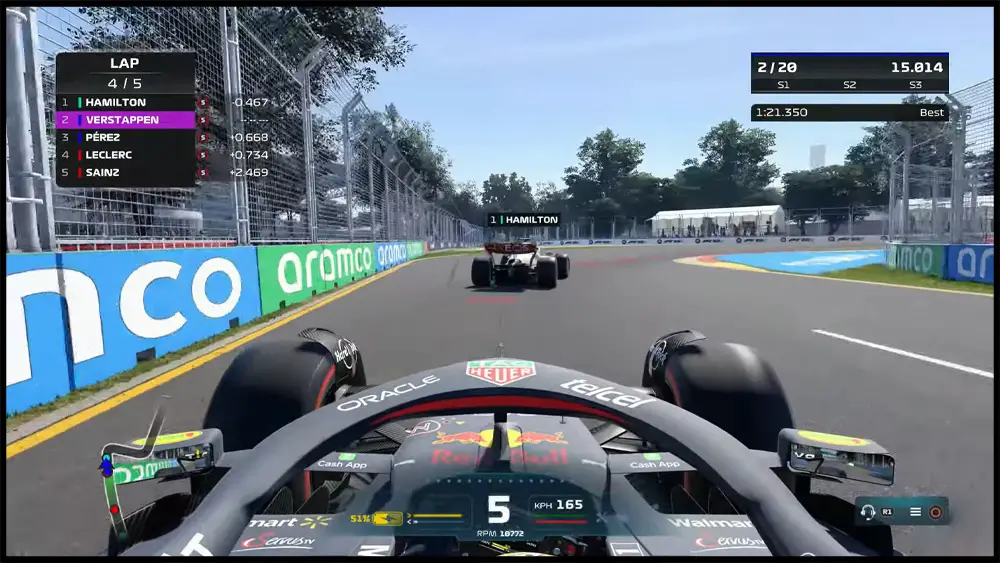
These numbers are great and very close to what the A80K could do, even slightly better. But in general they are slightly higher than what LG and Samsung TVs can do.
But the difference is small, and gaming can really be a pleasure. Just make sure you use the available Game mode. As outside that the input lag will greatly increase to around 155ms which can still can be fine for slow paced games but for nothing more.
One thing we need to mention is that the A80L does not support either 1440p resolution or 144Hz refresh rate. So 4K@120Hz is the best you can get. Keep that in mind as we start to see certain brands supporting more than 120Hz in their TVs now.
Other Gaming Features
We should also not forget to mention that the TV supports Auto Low Latency Mode (ALLM). This can be used with any devices that support that like the PS5 and Xbox consoles and can greatly benefit users.
Unfortunately, as with all Sony TVs there is no HGiG mode. But we do get Auto Genre Picture Mode and Auto HDR Tone Mapping which are Playstation 5 specific features.
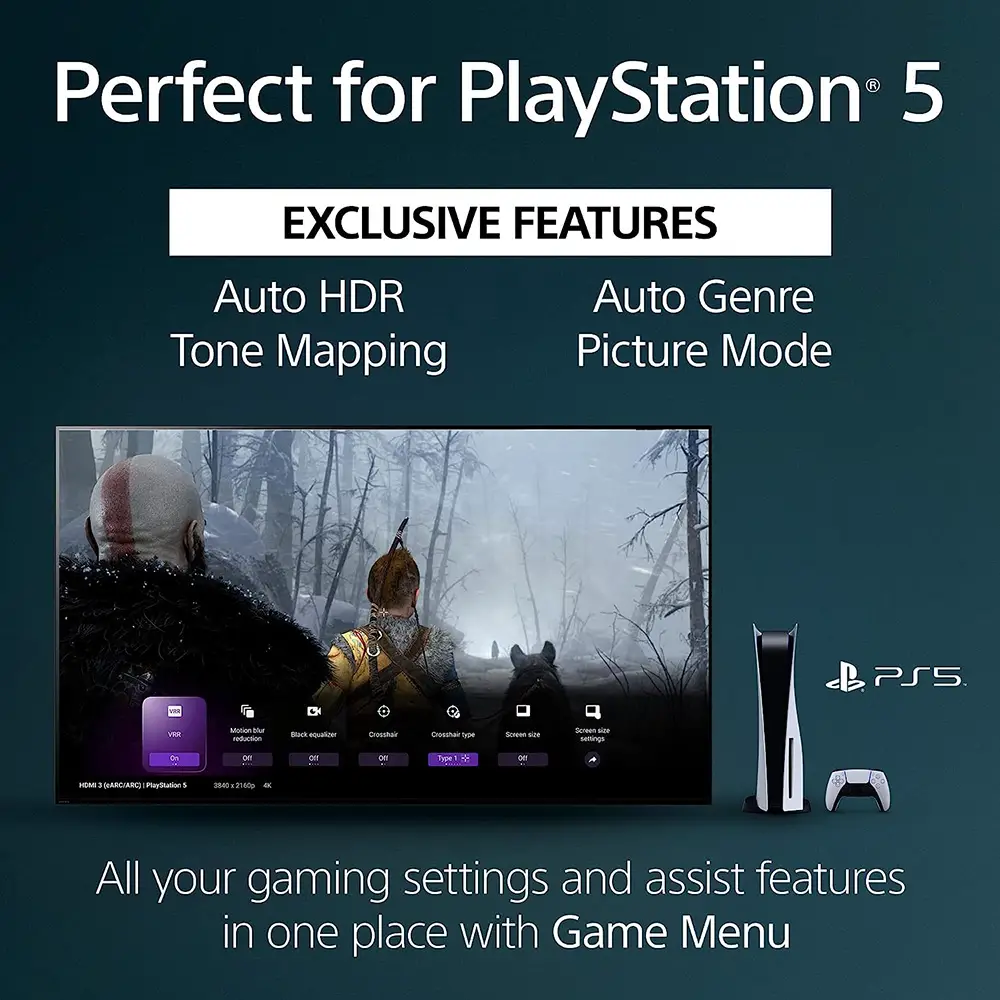
VRR Support
The A80L comes with VRR support out of the box, which Sony made standard last year. HDMI Forum VRR and G-Sync are supported but unfortunately not FreeSync. Sony is not supporting that in any of its releases so far. It was the same last year and it seems to be the same in 2023.
Trying Out a Few Games
As we usually do, to get a feel of the TV’s responsiveness we connected both our PS5 and Xbox series X to one of the HDMI 2.1 ports of the A80L. The games we decided to try out this time was F1 2022 which supports both 60Hz and 120Hz and Dead Space which is a 60Hz experience only.
In both cases the A80L did great. With the Game mode both games showcased incredibly low response times. All our commands would register on screen instantaneously which makes the whole experience much better.
The A80L is an excellent gaming TV. It may be missing some features like FreeSync, 1440p resolution and 144Hz support but if you don’t care for these then you are going to have an amazing time with this TV.

Overall Image Quality Impressions
To be honest both the A80K and A80L performed really close. Small differences were there but these were very small and are withing the natural differences same models can have.
The only worthy difference we can say is that the A80L is slightly dimmer. The difference again is very small but we saw lower brightness in both SDR and HDR. Everything else was almost the same.
Audio Quality
When it comes to sound Sony developed several technologies that uses in their TVs and the one that they used in the A80L is their most advanced one called Acoustic Surface Audio+.
Basically this is the same system we saw in the A80K so we don’t expect to find any major differences here.

Audio System – Channels & Power Rating
This system basically uses actuators at the back of the panel that vibrate and use the whole panel as a huge membrane in order to create sound. This way it seems like audio is coming from within the screen giving you a better sense of realism.
The A80L is using the same number of actuators and subwoofers as the A80K did. There are three actuators and two subwoofers in total. The actuators are behind the panel while the subwoofers are down firing oriented. So in essence we have a 3.2 channels system to work with.
Power output across all actuators and subwoofers is evenly distributed at 10W + 10W + 10W + 10W + 10W.
Audio Formats Support
There is support for Dolby Audio, Dolby Atmos and DTS Digital Surround sound. But keep in mind that as good as the A80L’s audio system may be it cannot convey the real sense of positional audio as a true surround system can. The hardware is simply not capable enough for real Atmos and surround action.
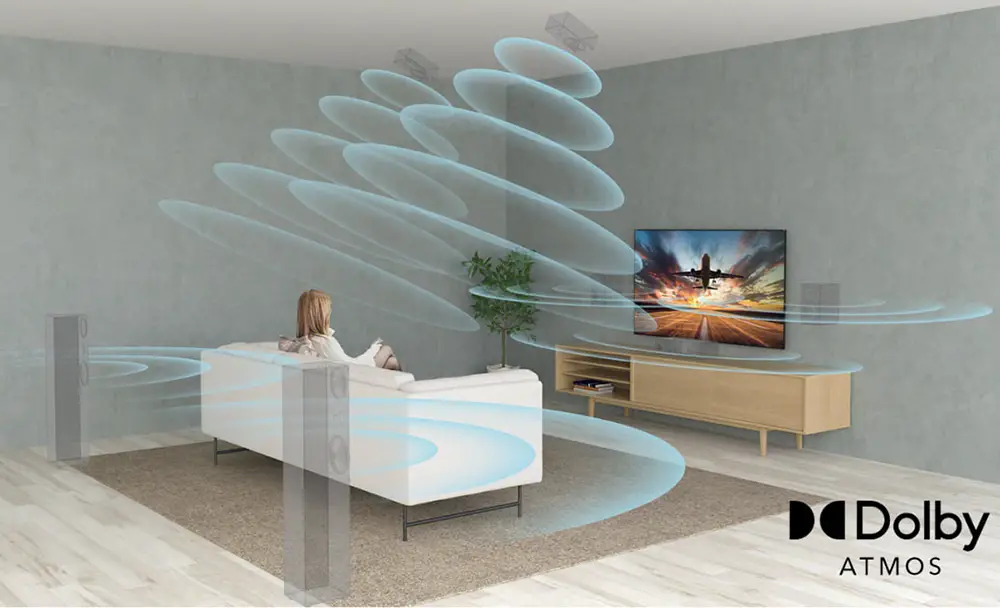
Also keep in mind that Sony supports DTS and can even pass-through both Dolby Atmos and DTS:X signals from its eARC port. So if this important to you then the Sony is one of your definite choices.
Since last year Sony was the only of the big three (Samsung, LG, Sony) to still support DTS. But LG brought it back in 2023 upping the competition considerably. Let’s hope Samsung will be forced to do the same in the future.
Audio Features
The inclusion of the XR Cognitive Processor has allowed the A80L to include a few more advanced technologies which are part of the XR Sound suite.
One of them is called XR Surround. With it the A80L is using 3D surround upscaling in order to create a more immersive virtual surround environment. As with most TVs that include some short of virtual tech the A80L does not offer true surround activity. The TV lacks any real rear speakers to begin with. And so the action is entirely front oriented because of this.
Also Voice Zoom 2 is Sony’s dialog enhancement technology. This feature detects voices and after analyzing them uses special filtering to suppress ambient sounds. This way even subtle dialog is greatly enhanced.

A couple more feature is Sony’s Acoustic Center Sync and 360 Spatial Sound Personalizer. With the first you can combine the TV with a Sony soundbar for a more synchronized output. The second can be used in combination with other speakers, like the SRS-NS7 wearable speaker, for spatial sound.
The A80L also features Sony’s Acoustic Auto calibration in order to get the best audio performance no matter your sitting position. This can be used in combination with the optional Bravia Cam as it will detect where you sit in the room and calibrate the audio accordingly.
Overall Audio Performance Impressions
Overall the A80L’s performance was in line with most other top tier TVs we have tested lately. Also compared to the A80K we didn’t sense any major changes.
The TV can get loud enough but pushing it too much will make compression more than noticeable. Voices had enough clarity but sound lacked depth and extension. Also the low end felt flat and uninspiring.
The TV is absolutely great for any kind of casual use. News broadcasting, sports and TV series will sound great. But for a cinematic experience you will need a full surround system. Or at least a good Dolby Atmos soundbar.
Ports and Connectivity
Next we will be looking at all the connection ports available. And here is another area where the A80L is entirely the same as the A80K.
Going from top to bottom we get two USB ports for connecting external storage or powering various devices. We also get a digital optical audio output for connecting older equipment that do not support HDMI connections.
Beneath we find a composite video input that also acts as an S-Center speaker input and four HDMI ports for connecting all your devices. We also get an Ethernet port for wired connection to your network, an RS-232C port for control, an IR input and the usual antenna/cable connector.
HDMI Specifications
As with all Sony TVs, we get two HDMI 2.1 ports along with two more older HDMI 2.0 ones. Although some other manufacturers like LG and Samsung offer four HDMI 2.1 ports at least two are better than one.
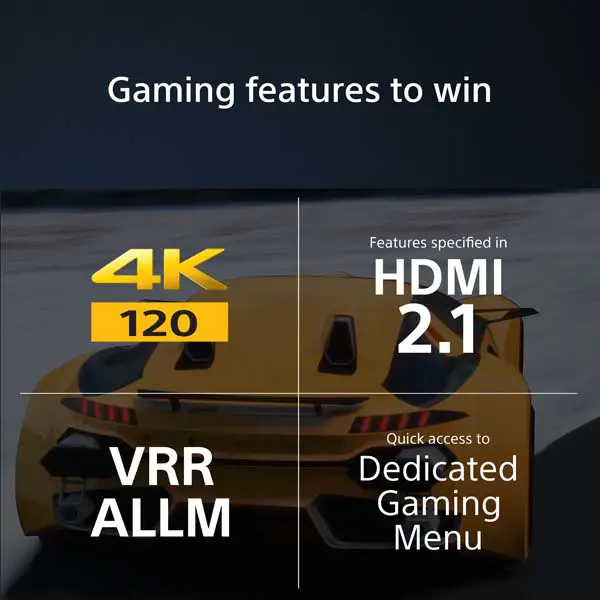
The problem here is that one of them is also the one with ARC/eARC functionality. So if you plan on using that then you are left with a single HDMI 2.1 port. In general all TVs that feature only two ports use Mediatek’s SoC. But at least the HDMI 2.1 ports in the A80L provide full bandwidth in order to allow high frame rate gaming and all HDMI 2.1 gaming features.
The HDMI 2.1 ports in the A80L support ARC, eARC, HFR, ALLM and VRR. With VRR both HDMI Forum VRR and G-Sync are available out of the box, something that applies for all 2023 Sony models. FreeSync VRR on the other hand is not in any of Sony releases.
Also keep in mind that the A80L does not support Dolby Vision at 120Hz. Only the new Sony A95L supports that because it uses the new MediaTek Pentonic 1000 SoC.
Connectivity Observations
Again, the Ethernet port is still the usual 100Mbps one. But this does not surprise us, as we have yet to see a TV making the transition to Gbit adapters.
Streaming requirements and internet connections have greatly advanced the last few years. This made the 100Mbps limit obsolete a while back. And while most TVs update their WiFi capabilities (some models even support WiFi6 this year) the Ethernet adapters are still the same.

And considering that the A80L comes with Bravia Core we are even more harsh to Sony for not updating their Ethernet adapters. This happens because Bravia Core’s highest quality Pure Stream available at 80Mbps require a minimum internet speed of 115Mbps. So in essence you cannot do that with a wired connection and have to rely on wireless with all the problems this can bring.
And lastly Sony, unlike some of the other big manufacturers, actually provide a USB 3.0 port in most of their TVs. Usually manufacturers don’t seem very fond of using the newer USB ports. And rely mostly on the archaic 2.0 version even for many of their top premium models. So having one is definitely a plus.
Wireless Capabilities
When it comes to its wireless capabilities the Samsung A80L supports WiFi5 (802.11ac) along with Bluetooth 4.2.
OS, Apps and Features
The A80L comes with the latest version of Google TV which has reached version 11.0 this year. The last versions of Google TV do not have major differences between them and they keep their overall layout unchanged.
Basically the A80L uses the same OS we recently saw in our TCL QM8 review.
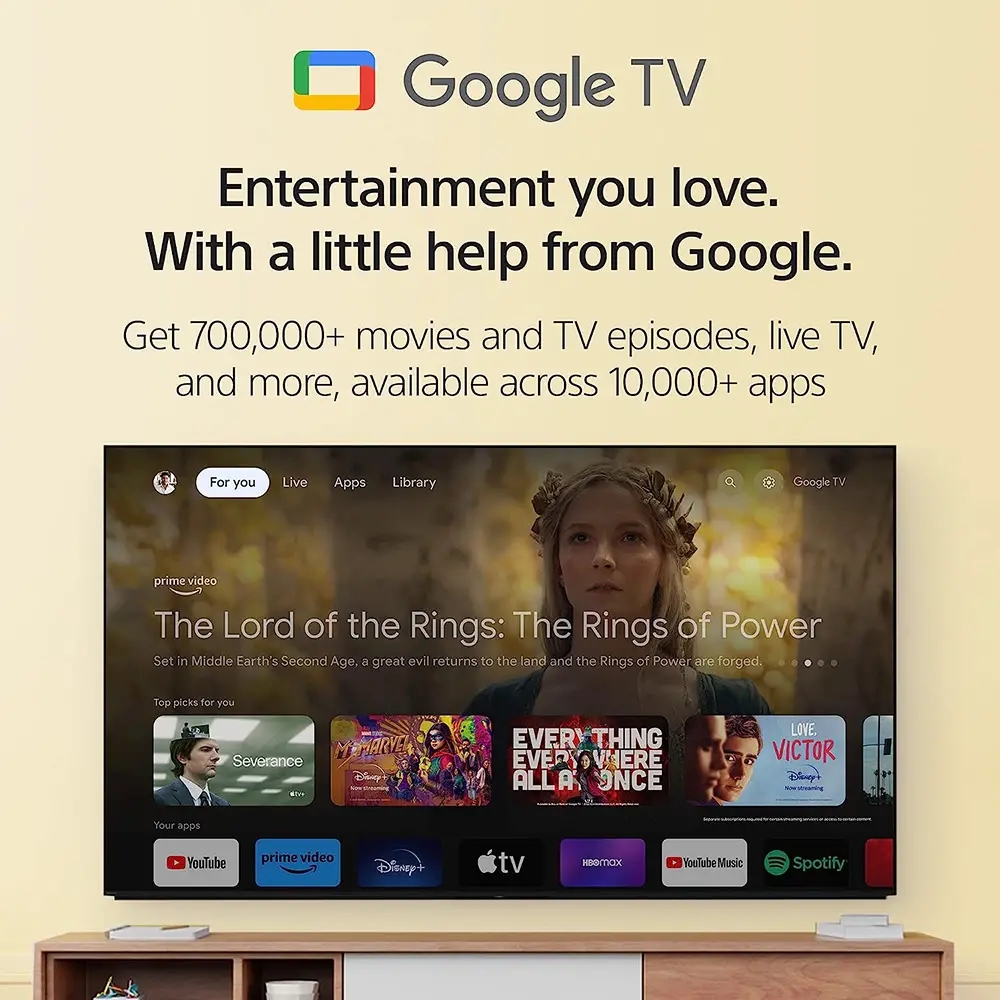
Google TV 11.0
Google has done a poor job at making clear of the differences between Google TV and Android TV that is still being used from some TV brands.
To make things real simple Google TV is still Android TV but with an extra layer on top of it. Think of it like how it works with Android smartphones. Most manufacturers that use Android in their releases they use on top of that their own layer that gives this extra something to their UI that make them unique both in appearance and functionality.
The same is with Google TV. You still basically use Android TV but there is the extra Google TV layer on top in order to make the UI feel different both in looks and functionality.
Google TV seems to have been designed around recommendations, either it be movies, TV shows or applications and this seems to be the main focus of all the latest OS in general. During setup the wizard asks you of what specific streaming services you use in order to customize the Home screen recommendations.
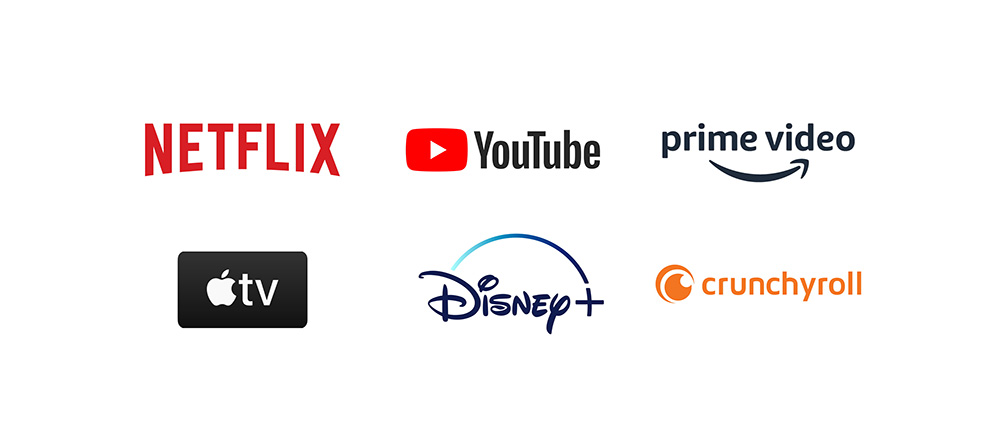
Keep in mind that Google TV is still Android at its core even though it looks different from Android TV. But with Google TV things seem more fluent, more direct and more easy to navigate around.
Google TV 11.0 in the A80L had really smooth navigating. All apps would open almost instantly and we didn’t notice any bothering delays between apps. Overall a very pleasing user experience. One that such a high profile release should offer.
Streaming Capabilities
If there is one thing that Android has in abundance that is huge app support. Through the included Google Play Store you can find literally thousands of apps that you can download and use except from the pre-installed ones. There is so much content available that you will hardly miss anything.
All the big names are obviously present like Google TV, Disney+, Netflix, Amazon Video, Hulu and Youtube as well as Pandora, Tidal, Google Play Music, Spotify or iHeartRadio. As always some of them are region dependent so make sure the ones you are interested in are working in your area. Lastly many apps like Netflix and Youtube support playback for both 4K and HDR content for those interested in it.
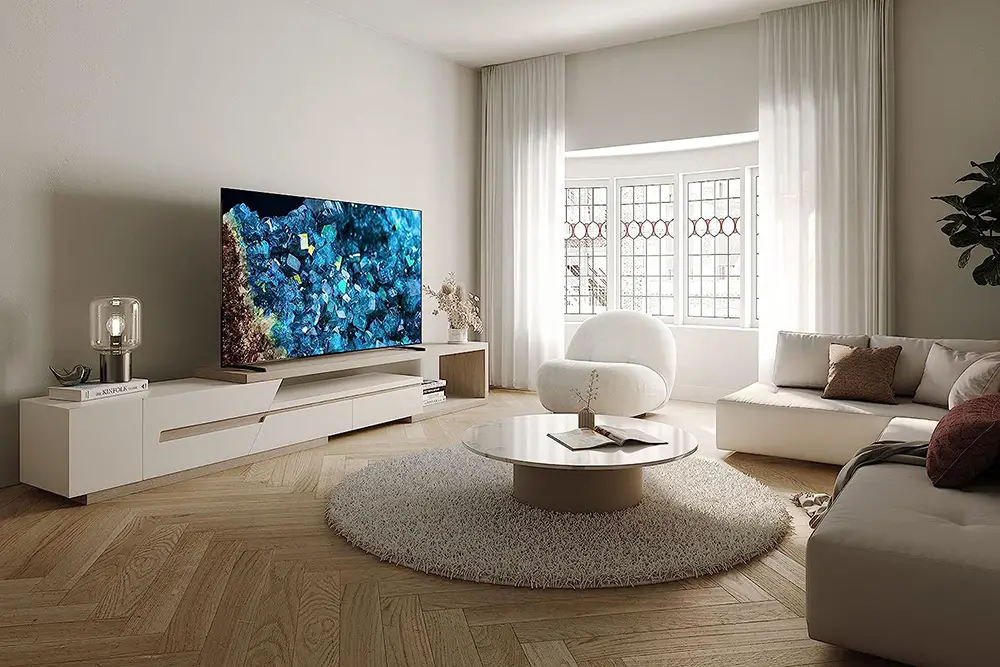
Various Connectivity Features
Chromecast is also available here and it gives you the ability to stream content from other Chromecast enabled devices like mobile phones and tablets directly to the TV.
Sony has also added support for both Apple Airplay 2 and HomeKit. With Airplay 2 you can stream content from other Apple devices on your TV while HomeKit lets you control certain aspects of the TV through your mobile device.
Voice Control
Voice control is also present but it seems that it is a bit limited compared to other competing models. While Google Assistant is built-in the TV, for Amazon Alexa you will need an external Alexa enabled device to work.
You also have the ability to use Apple’s Siri through HomeKit in case you prefer Apple’s solution.

Built-in Media Player
As with most TVs nowadays the A80L can playback a wide range of files and codecs through its USB port. These built-in media players can playback almost all of the know files available right now.
We tested the TV by trying a selection of files we keep for this reason. The files we tried were various combinations of video and audio codecs and the results were pretty good.
Some files that have unrealistically high bitrates or strange codec combinations had trouble with correct playback. But this was to be expected and most usual files worked without any problems at all. The media player worked as it should most of the times.
Netflix Adaptive Calibrated Mode
The A80L also comes with the Netflix Adaptive Calibrated Mode which we also saw in the A80K. What this does is to allow you to experience picture quality close to a filmmaker’s vision and intent for all content that is streamed through the Netflix streaming service.
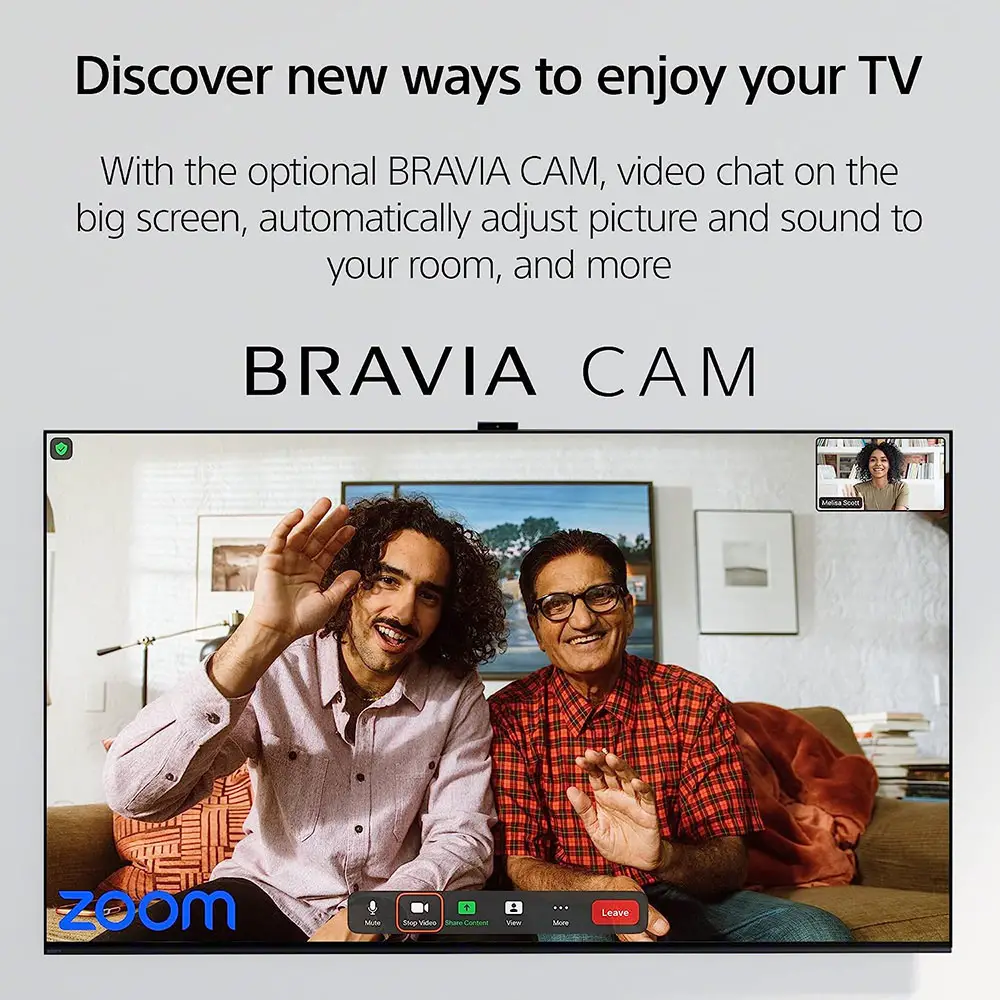
This feature works together with the ambient light optimization feature of the A80L by optimizing the picture brightness based on your room lighting conditions.
Calman Ready
For one more year all Sony TVs are Calman Ready. To address color variations from the production process, the TV is ready to use Portrait Displays’ high-performance Calman auto-calibration software.
This allows an unprecedented level of calibration and the ability to fine-tune adjustments simply not possible through conventional picture settings. It delivers high-fidelity color reproduction that’s true to the original TV signal, and can even adapt to the subtlest changes in color that may occur over time.
Bravia Cam
Bravia Cam is another returning feature. This is an optional accessory that can be purchased separately and can further enhance the functionality of the A80L.
With the Bravia Cam the TV can detect where you sit in the room and adjust the picture and audio accordingly. Other functions include gesture control and power saving features among others.

Game Menu and Eco Dashboard
LG started it, Samsung followed, so it was about time Sony to offer something similar. The new Game Menu offers you the ability to gain access to certain gaming features like VRR, screen size settings and picture features. And all of this with a press of a button.
Also new is the Eco Dashboard. This allows you to change energy settings but also indicate you how these settings affect power consumption. Everything through a single, comprehensive screen.
Compared to other TVs
Well, the most obvious comparison here is the 2022 Sony A80K. Basically the two TVs are almost identical. We did measure slightly different brightness values but the difference is not huge. And taking into account the lower price of the one year old A80K, we consider them the same. The only plus on the A80L is that you can find it in the new bigger 83″ size.
Close to this price we also find the 2023 LG C3 OLED. The C3 is slightly more expensive but it is also better than the A80K. Its peak brightness is higher, it supports FreeSync, its input lag is a bit lower and comes with four HDMI 2.1 ports. The A80L on the other hand is a bit better with processing, which is a characteristic of most top tier Sony TVs.
Lastly we could compare the A80L with Samsung’s S90C. Although the price of the S90C is around $200 higher this also reflects on its performance. The Samsung has higher brightness and better color coverage, four HDMI ports, FreeSync support and lower input lag.
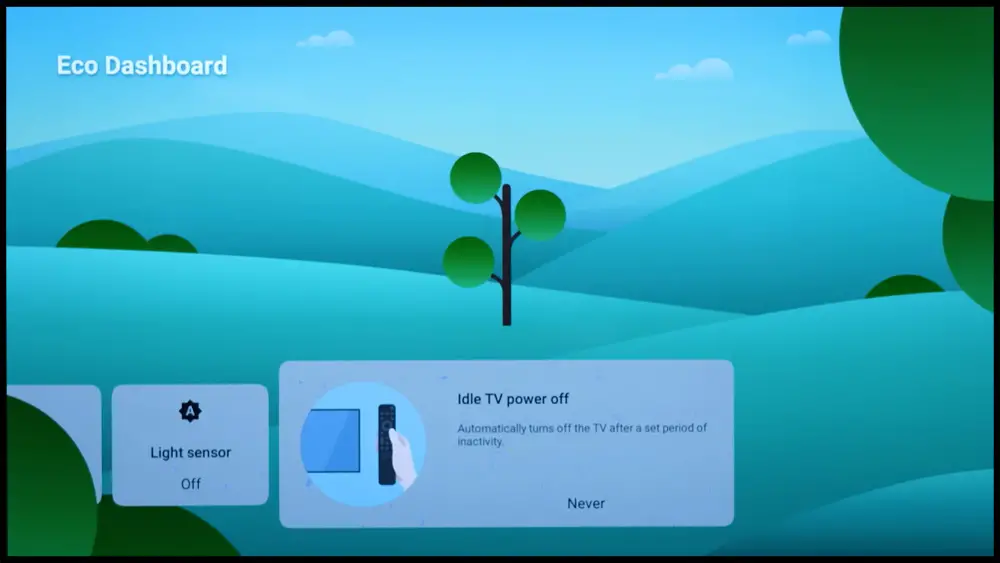
Final Thoughts
The Sony A80L is a fine OLED TV and while it may not be on par with some of 2023’s flagships its OLED virtues make it an excellent option for one more year. Either you wan to use it for movies or games OLED remains a safe choice in terms of performance and picture quality.
The A80L showed us one more time why Sony is so good with processing. If you combine this with all the strengths of OLED technology which includes deep blacks, amazing contrast, excellent viewing angles and lifelike colors you get of the best OLED offering in this price. And let’s not forget its smart TV prowess with Google TV offering all the features and services you will ever need.
On the other hand the A80L is not the brightest OLED you can get. Sony is still stuck with two HDMI 2.1 ports while they do not support FreeSync. Audio is adequate for casual use only while it is missing HDR10+.
The Sony A80L may feel like a rebranded A80K and not without reason. There are so many similarities between the two that is hard to claim one of them better than the other. If you can get the A80K in a discounted price then go for it. Otherwise the A80L is a damn fine choice. And one you will definitely feel satisfied with.
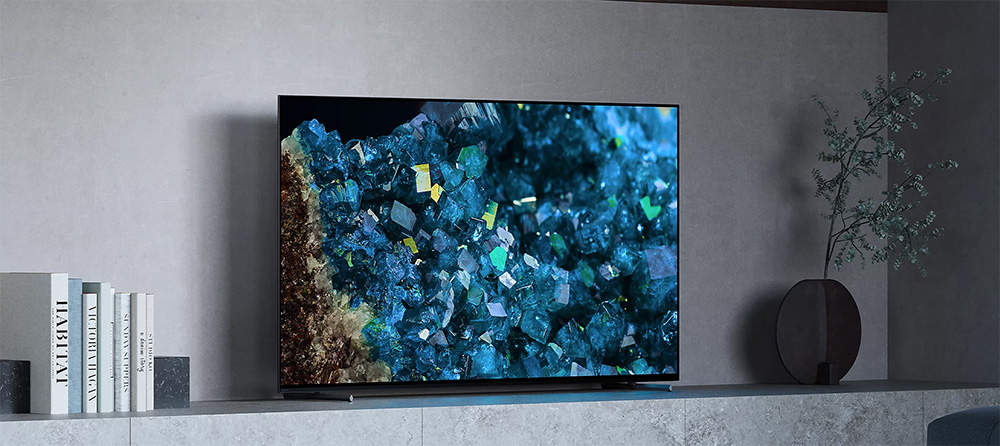
For more reviews you can check our dedicated 4K OLED TV reviews section or even look at our Product Reviews Table where you can find the brand and specific product you are looking for.
Cheapest Places to Buy :
*We are a reader-supported website. When you buy through links on our site, we may earn a small affiliate commission at no extra cost to you. Home Media Entertainment does not accept money for reviews.*
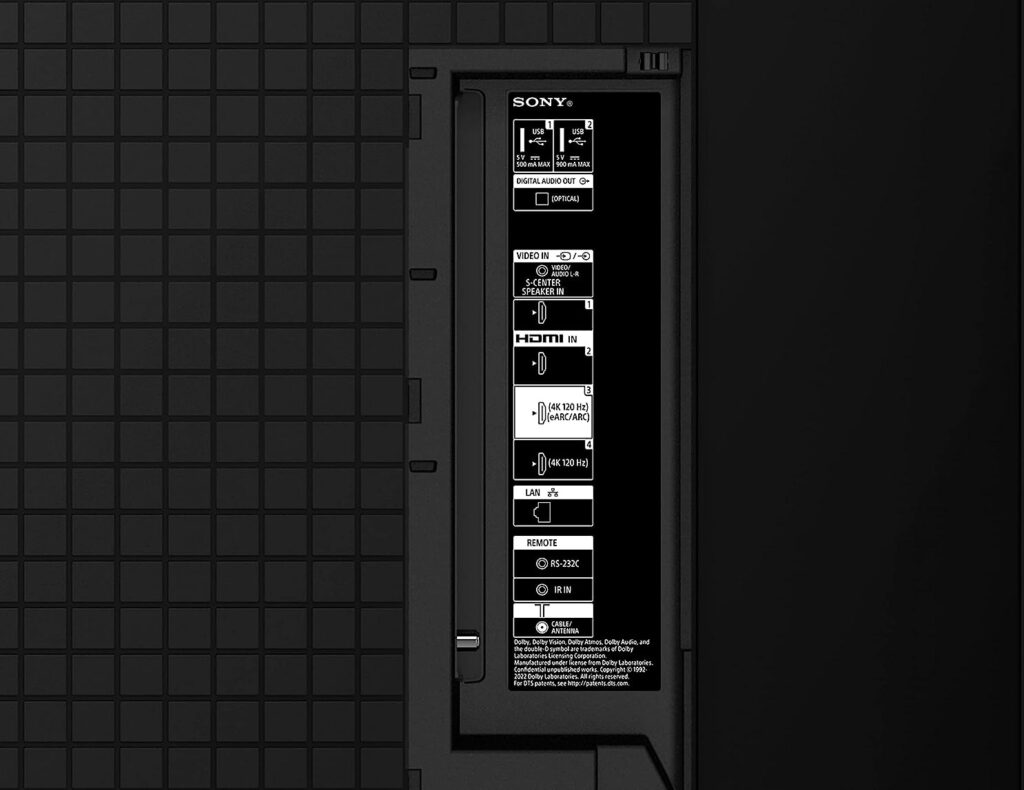
This is one of the most comprehensive and detailed reviews of the A80L I have seen on the web so far. It took a while to go through everything but I like how you provide so much information for us to make the best decision for our situation and budget. Really kudos to you. Keep up the good work!
Thank you Steph. If you are looking for a TV and you need further help let me know in the comments area. I will help you as much as I can.
Thanks, Stratos, for this review and all the comparative tests you have run. I like Sony products and I’m interested in what Sony has to offer in its most up-to-date releases. Helpful to have it compared to the previous model.
It seems that the A80L is more of a repackaged A80K. From your tests I don’t see any meaningful difference so I think it’s a pass for me. Obviously I was not expecting anything major as OLED has reached its peak for some years now. But they could very well keep last year’s model and call it a day.
Hey Michelle. Indeed the A80L is almost the same. So for as long as stock is available the A80K is the better choice. Given its already one year lowered price. The differences they have do not justify a new purchase but if you look for a new TV and the A80K is unavailable then the A80L is not a bad TV at all.